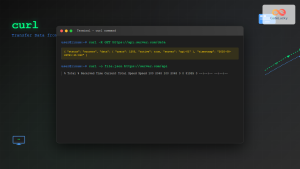📧 In today’s interconnected world, email communication remains a cornerstone of both personal and business interactions. As a PHP developer, mastering the art of sending emails programmatically is an essential skill. This article will dive deep into the world of PHP SMTP (Simple Mail Transfer Protocol), exploring how to leverage SMTP servers to send emails reliably and efficiently.
Understanding SMTP and Its Importance
SMTP, or Simple Mail Transfer Protocol, is the industry standard for email transmission across the Internet. It’s the backbone of email communication, ensuring that your messages reach their intended recipients.
🔑 Key benefits of using SMTP for sending emails:
- Improved deliverability
- Better control over email headers
- Support for authentication
- Ability to send emails from different domains
Let’s start our journey into PHP SMTP by exploring the built-in mail() function and why it might not always be the best choice.
The Limitations of PHP’s mail() Function
PHP provides a built-in mail() function for sending emails. While it’s simple to use, it has several limitations:
<?php
$to = "[email protected]";
$subject = "Test Email";
$message = "This is a test email sent using PHP's mail() function.";
$headers = "From: [email protected]";
if(mail($to, $subject, $message, $headers)) {
echo "Email sent successfully!";
} else {
echo "Email sending failed.";
}
?>
⚠️ Limitations of mail():
- Limited control over email headers
- No built-in support for SMTP authentication
- Relies on the server’s default mail configuration
- Can be blocked by spam filters more easily
These limitations make the mail() function less suitable for professional applications or when sending a large volume of emails.
Introducing PHPMailer: A Robust SMTP Solution
To overcome the limitations of the mail() function, we’ll use PHPMailer, a popular and feature-rich email sending library for PHP.
First, let’s install PHPMailer using Composer:
composer require phpmailer/phpmailer
Now, let’s create a basic script to send an email using PHPMailer and SMTP:
<?php
use PHPMailer\PHPMailer\PHPMailer;
use PHPMailer\PHPMailer\Exception;
require 'vendor/autoload.php';
$mail = new PHPMailer(true);
try {
// Server settings
$mail->isSMTP();
$mail->Host = 'smtp.example.com';
$mail->SMTPAuth = true;
$mail->Username = 'your_username';
$mail->Password = 'your_password';
$mail->SMTPSecure = PHPMailer::ENCRYPTION_STARTTLS;
$mail->Port = 587;
// Recipients
$mail->setFrom('[email protected]', 'Sender Name');
$mail->addAddress('[email protected]', 'Recipient Name');
// Content
$mail->isHTML(true);
$mail->Subject = 'Here is the subject';
$mail->Body = 'This is the HTML message body <b>in bold!</b>';
$mail->AltBody = 'This is the body in plain text for non-HTML mail clients';
$mail->send();
echo 'Message has been sent';
} catch (Exception $e) {
echo "Message could not be sent. Mailer Error: {$mail->ErrorInfo}";
}
Let’s break down this script and explore its components:
-
SMTP Configuration: We set up the SMTP server details, including the host, port, authentication credentials, and encryption method.
-
Sender and Recipient: We specify the sender’s email and name, as well as the recipient’s details.
-
Email Content: We set the subject, HTML body, and plain text alternative for the email.
-
Error Handling: We use a try-catch block to handle any exceptions that might occur during the email sending process.
Advanced SMTP Techniques with PHPMailer
Now that we’ve covered the basics, let’s explore some advanced techniques for sending emails via SMTP using PHPMailer.
Sending Attachments
Adding attachments to your emails is a common requirement. Here’s how you can do it with PHPMailer:
<?php
// ... (previous PHPMailer setup code)
// Add attachments
$mail->addAttachment('/path/to/file.pdf', 'NewFileName.pdf');
$mail->addAttachment('/path/to/image.jpg', 'image.jpg');
// ... (rest of the email sending code)
In this example, we’re attaching a PDF file and an image to the email. The addAttachment() method takes two parameters: the path to the file and an optional new filename for the attachment.
Sending to Multiple Recipients
Often, you’ll need to send the same email to multiple recipients. PHPMailer makes this easy:
<?php
// ... (previous PHPMailer setup code)
// Add multiple recipients
$mail->addAddress('[email protected]', 'Recipient One');
$mail->addAddress('[email protected]', 'Recipient Two');
$mail->addCC('[email protected]', 'CC Recipient');
$mail->addBCC('[email protected]', 'BCC Recipient');
// ... (rest of the email sending code)
This script demonstrates how to add multiple direct recipients, as well as CC (Carbon Copy) and BCC (Blind Carbon Copy) recipients.
Using HTML Templates
For more professional-looking emails, you might want to use HTML templates. Here’s an example of how to incorporate an HTML template into your PHPMailer script:
<?php
// ... (previous PHPMailer setup code)
// Read HTML template file
$htmlTemplate = file_get_contents('email_template.html');
// Replace placeholders in the template
$htmlBody = str_replace(
['{{NAME}}', '{{MESSAGE}}'],
['John Doe', 'This is a personalized message for you.'],
$htmlTemplate
);
// Set email body
$mail->isHTML(true);
$mail->Body = $htmlBody;
$mail->AltBody = strip_tags($htmlBody); // Plain text version of the HTML body
// ... (rest of the email sending code)
In this example, we’re reading an HTML template from a file, replacing placeholders with actual content, and then setting it as the email body.
Handling SMTP Errors
When sending emails via SMTP, it’s crucial to handle errors gracefully. Let’s expand our error handling:
<?php
// ... (previous PHPMailer setup code)
try {
// ... (email configuration and sending code)
$mail->send();
echo "Email sent successfully to " . $mail->getToAddresses()[0][0];
} catch (Exception $e) {
if ($mail->SMTPDebug) {
echo "Detailed error information:<br>";
echo nl2br($mail->ErrorInfo);
} else {
echo "An error occurred while sending the email. Please try again later.";
}
// Log the error
error_log("PHPMailer Error: " . $mail->ErrorInfo);
}
This enhanced error handling provides more detailed information when debugging is enabled, logs the error for future reference, and gives a user-friendly message in production environments.
Best Practices for PHP SMTP
To ensure the best results when sending emails via SMTP, consider these best practices:
-
Use SSL/TLS Encryption: Always use encryption when connecting to SMTP servers to protect sensitive information.
$mail->SMTPSecure = PHPMailer::ENCRYPTION_STARTTLS; -
Implement Rate Limiting: Many SMTP servers have rate limits. Implement a queue system for large volumes of emails.
-
Handle Bounces: Set up a system to handle bounced emails to maintain a clean recipient list.
-
Use SPF and DKIM: Implement Sender Policy Framework (SPF) and DomainKeys Identified Mail (DKIM) to improve email deliverability.
-
Test Thoroughly: Always test your emails across different email clients and devices to ensure consistent rendering.
Conclusion
🚀 Mastering PHP SMTP opens up a world of possibilities for your applications. From sending simple notifications to complex HTML newsletters, the ability to programmatically send emails is a powerful tool in any developer’s arsenal.
By leveraging libraries like PHPMailer and following best practices, you can ensure that your emails are sent reliably, securely, and efficiently. Remember to always handle errors gracefully, respect rate limits, and stay compliant with email regulations.
As you continue to explore the world of PHP SMTP, you’ll discover even more advanced techniques and optimizations. Happy coding, and may your emails always reach their destination! 📬



















